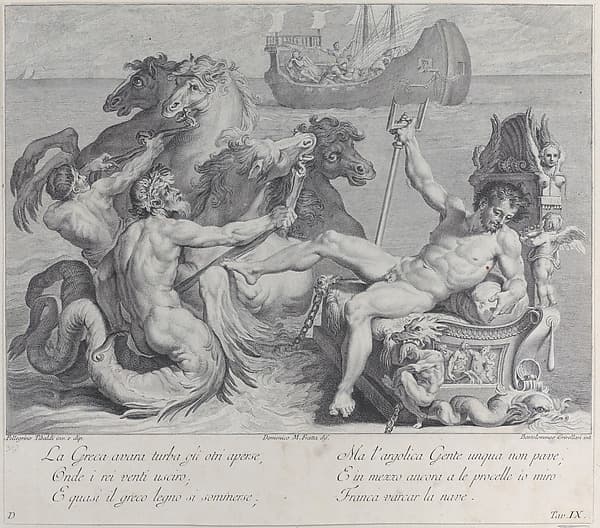
Related Artworks
Discover similar artworks

Saint Agnes with a lamb
1774

Amorino holding a pole
1774

Plate 27: Ulysses received by Alcinous king of Phoeacia and his Queen Areta after his shipwreck
1756

Christ Disputing in the Temple
1568–77

Speculum Romanae Magnificentiae: Castello Sant' Angelo
1557

Holy Family with Saint John the Baptist who kneels at the right
1531–76

Speculum Romanae Magnificentiae: Aerial View of the Belvedere and its Gardens
1579

Plate 9: the Greeks opening the bag of wind, thinking there is gold inside, driving their vessel to the island of Circe
1756

Plate 8: Ulysses receiving the winds in a leather bag from Aeolus
1756

The Triubute Money: Christ at center right gesturing to man at his left with coins in his hand, other figures surrounding them; columns and drapery in the background
ca. 1564–89

The Judgment of Paris
ca. 1550–60

Christoforo Roncalli, called Pomerancio, a bust-length portrait in a twelve-sided frame
1623
More by Giovanni Domenico Campiglia
Explore other works by this artist

Plate LXVIII (68): Hercules, from "Museum Florentinum" (Statuae antiquae dorum et virorum illustrium)
1734

Plate XXXIII (33): Venus, from "Museum Florentinum" (Statuae antiquae dorum et virorum illustrium)
1734

Plate XVII (17): A Muse, from "Museum Florentinum" (Statuae antiquae dorum et virorum illustrium)
1734

Plate LXXI (71): Narcissus, from "Museum Florentinum" (Statuae antiquae dorum et virorum illustrium)
1734

Plate IIII (4): Leda and the Swan, from "Museum Florentinum" (Statuae antiquae dorum et virorum illustrium)
1734

Plate LI (51): Bacchus, from "Museum Florentinum" (Statuae antiquae dorum et virorum illustrium)
1734

Plate LXII (62): Flora, from "Museum Florentinum" (Statuae antiquae dorum et virorum illustrium)
1734

Plate LXXV (75): Male Athlete, from "Museum Florentinum" (Statuae antiquae dorum et virorum illustrium)
1734

Plate X (10): Apollo, from "Museum Florentinum" (Statuae antiquae dorum et virorum illustrium)
1734

Plate XXXVIII (38): Mercury, from "Museum Florentinum" (Statuae antiquae dorum et virorum illustrium)
1734

Plate XIX (19): Diana, from "Museum Florentinum" (Statuae antiquae dorum et virorum illustrium)
1734

She gathers the fairest flower (Il più bel fior ne coglie), a group of six putti working together in an arched workshop
1740–59